In This Article
Craving a little escape from Vienna? In this post, I’ll share the storybook villages, alpine lakes, and vineyard-covered hills just beyond Vienna—where timeless charm and Austrian adventure are only a day trip away. These trips blend storybook scenery, imperial history, and peaceful wine country vibes—just a short ride away.
If you are in a hurry, I recommend:
- Wander the cobbled streets and abbey of Melk in the scenic Wachau Valley.
- Sip local wines in the vineyards of Krems or Gumpoldskirchen.
- Explore the fairytale castle and lake views of Schloss Ort in Gmunden.
- Take a train to Bratislava for riverside charm and Old Town cafés.
- Hike through forested trails and panoramic lookouts in the Vienna Woods (Wienerwald).
Unique Day Trips from Vienna:
1. Baden Bei Wien - 30 minutes by car or 40 minutes by train from Vienna
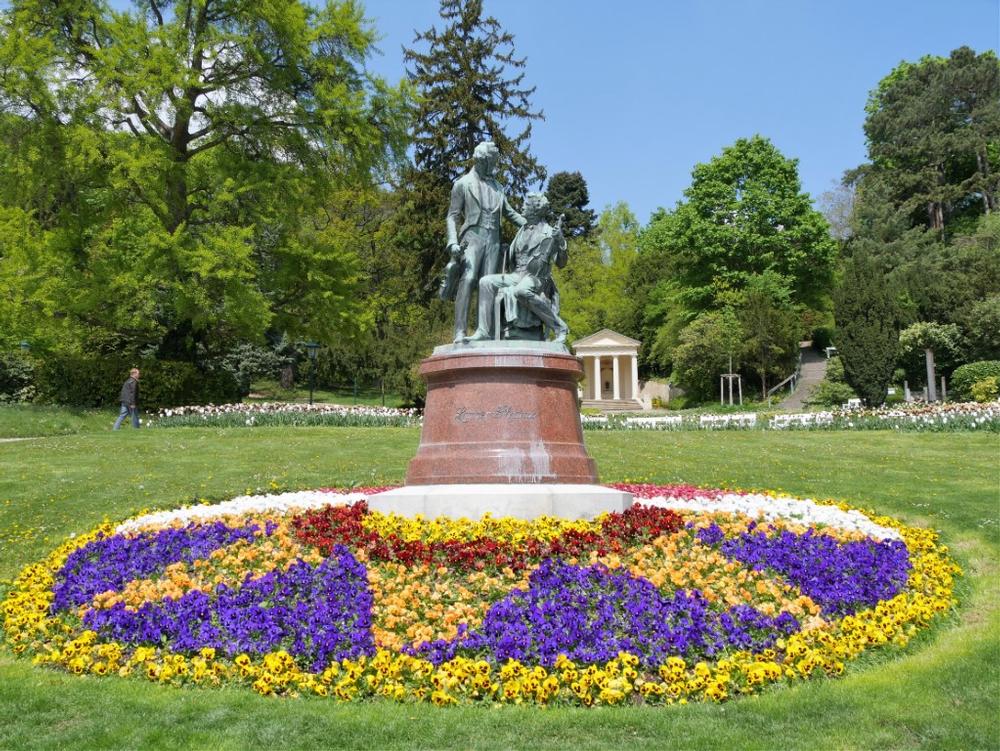
© Erika/stock.adobe.com
Location:
Baden Bei Wien, Austria
Highlights:
If you’re dreaming of hot springs, elegant gardens, and a dash of Austrian history, Baden Bei Wien is one of those easy escapes we’d whisper about like a local secret. Just 16 miles from Vienna, this spa town feels like a true reset button.
Recommended For:
Spa-goers, romantic couples, wellness seekers, history fans, and travelers needing a peaceful day trip from Vienna.
What I Love: ♥
Thermal spas with garden views and sandy relaxation zones, Beethoven’s house, and fairytale castle ruins.
- Soak in the healing thermal waters—Baden’s claim to fame since the days of the Habsburgs.
- Relax in spa gardens or enjoy the unique artificial beach at select wellness centers.
- Explore the ruins of Rauheneck and Rauhenstein castles, perfect for scenic hikes and panoramic views.
- Visit the childhood home of Ludwig van Beethoven, which now serves as a museum honoring his life and work.
- Wander through the Doll and Toy Museum, home to over 1,000 whimsical vintage treasures.
Distance from Vienna:
About 30 minutes by car or 40 minutes by train.
How to Get to Baden Bei Wien:
From Vienna, take the S-Bahn or a regional ÖBB train to Baden station. From there, local trams and buses provide easy access to spas and attractions.
Address:
Baden Bei Wien, Austria
2. Bratislava
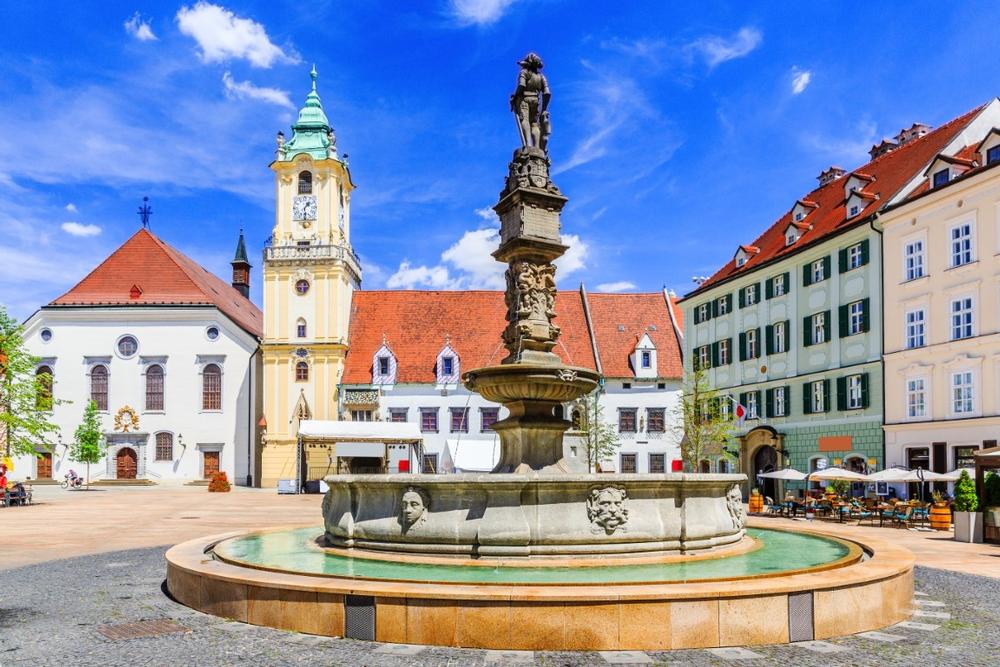
© emperorcosar/stock.adobe.com
Location:
Bratislava, Slovakia
Highlights:
If you’re in the mood to skip the crowds and still soak in charm, Bratislava is one of those places we’d excitedly recommend. It’s got castle views, cobblestone streets, and some of the best wine tastings in Central Europe.
Recommended For:
Culture seekers, wine lovers, architecture fans, and travelers looking for a laid-back, underrated European capital.
What I Love: ♥
The car-free Old Town, hilltop castle views, quiet charm, and the chance to sample Slovakia’s top 100 wines.
- Wander the pedestrian-only Old Town filled with historic buildings, sidewalk cafés, and hidden sculptures.
- Climb to Bratislava Castle for sweeping views over the Danube and a dive into Slovak history.
- Sample from the Slovak National Collection of Wines, a curated tasting experience of the country’s best vintages.
- Snap quirky photos with the city’s playful statues—like the famous “Man at Work.”
- Explore at your own pace—Bratislava is walkable, welcoming, and easy to love in a day or two.
Distance from Vienna:
Just over an hour by train, bus, or boat along the Danube.
How to Get to Bratislava:
From Vienna, hop on a direct train, bus, or high-speed ferry. Once there, most of the city’s main sights are within walking distance.
Address:
Bratislava, Slovakia
3. Brno
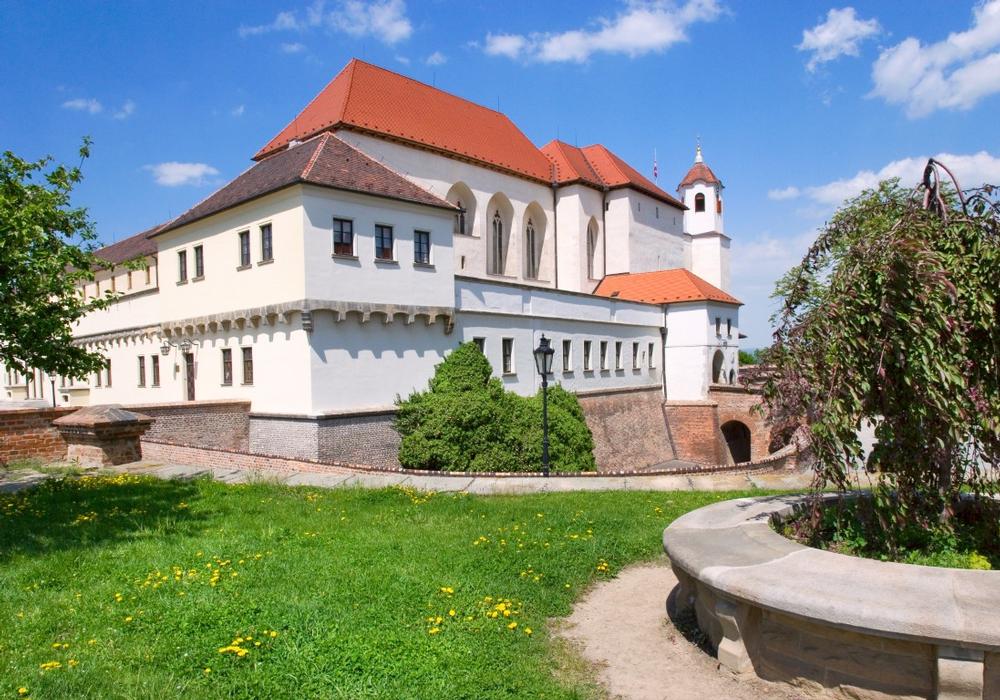
© kaprikfoto/stock.adobe.com
Location:
Brno, Czech Republic
Highlights:
Brno might not be on every traveler’s radar, but once you’re there, it’s impossible not to be charmed. It’s got modernist gems, historic sites, and that laid-back energy that makes you want to stay just a little longer.
Recommended For:
Architecture buffs, café hoppers, museum lovers, and travelers looking for an artsy, uncrowded European city.
What I Love: ♥
The mix of modernist and Baroque architecture, Špilberk Castle views, hidden monasteries, and world-class museums in a totally walkable downtown.
- Wander the historic city center and discover Petrov Cathedral, the Capuchin Monastery, and Špilberk Castle overlooking the city.
- Admire Brno’s modernist buildings, including the iconic Villa Tugendhat (advance reservations recommended).
- Visit the Mendel Museum, honoring the “father of genetics,” who lived and worked in Brno.
- Explore the Moravian Museum, the second-largest in the Czech Republic, with fascinating permanent exhibitions.
- Relax with a coffee or local wine at one of Brno’s many stylish cafés and bars tucked into atmospheric streets.
Distance from Vienna:
About 1.5 hours by train or car.
How to Get to Brno:
Take a direct train or drive from Vienna. Once in Brno, nearly everything worth seeing is within easy walking distance of the main square.
Address:
Brno, Czech Republic
4. Budapest

© BRIAN_KINNEY/stock.adobe.com
Location:
Budapest, Hungary
Highlights:
Budapest is the kind of place you instantly fall for—full of history, healing baths, and some of the best views in Europe. Whether you're spending a day or a weekend, it's got that magical mix of beauty, culture, and energy.
Recommended For:
First-time Europe travelers, spa lovers, photographers, history buffs, and night owls drawn to cool, underground bar scenes.
What I Love: ♥
Soaking in mineral baths, panoramic views from Buda Castle, and sipping cocktails in quirky ruin bars after dark.
- Soak in world-famous thermal baths like Széchenyi or Gellért—ideal after a day of sightseeing.
- Visit the Hungarian Parliament Building, one of Europe’s most stunning government landmarks.
- Ride the funicular up to Buda’s Old Town and explore Buda Castle and Fisherman’s Bastion.
- Wander the Danube promenade and take in postcard-worthy views of bridges and city lights.
- Experience the legendary ruin bars—once-abandoned buildings turned into atmospheric nightlife spots.
Distance from Vienna:
About 2.5 hours by train or car.
How to Get to Budapest:
Take a direct train from Vienna’s central station to Budapest Keleti. Once there, the city is easy to explore by foot, metro, or tram.
Address:
Budapest, Hungary
5. Carnuntum
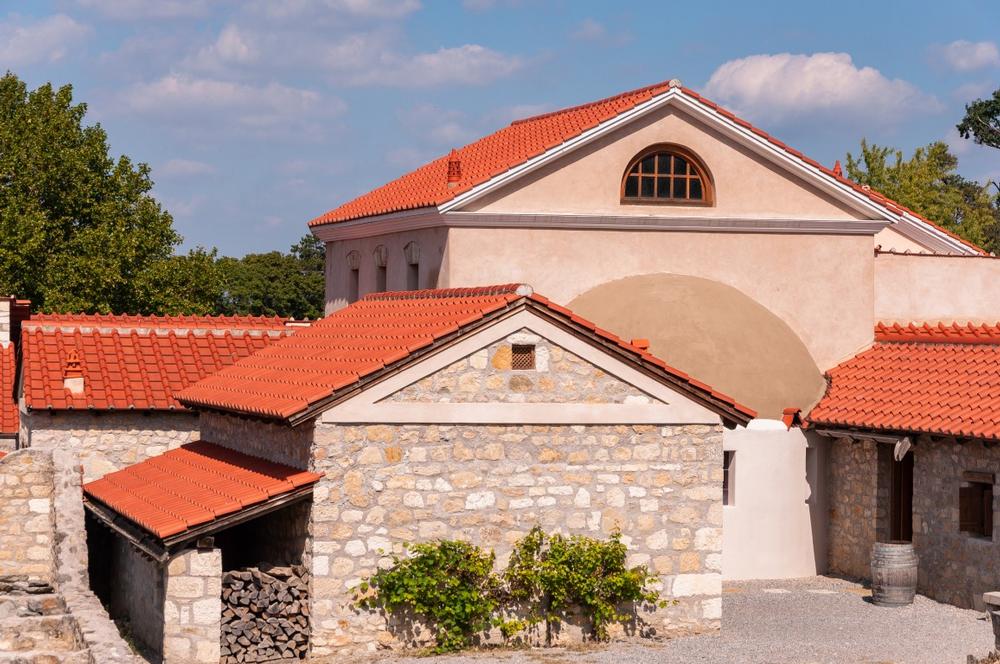
© kobra78/stock.adobe.com
Location:
Petronell-Carnuntum, Austria
Highlights:
If Roman ruins spark your curiosity, Carnuntum is one of those rare gems we’d tell you to put at the top of your list. It's like stepping straight into the 2nd century—with real ruins, lifelike reconstructions, and an amphitheater echoing with history.
Recommended For:
History lovers, families, archaeology buffs, and anyone fascinated by ancient Rome brought vividly to life.
What I Love: ♥
The fully reconstructed Roman City Quarter, original amphitheater ruins, and immersive exhibits that transport you back 1700 years.
- Explore the Roman City Quarter, where reconstructed homes and baths mirror authentic Roman architecture and furnishings.
- Visit the 2nd-century amphitheater and imagine the gladiator spectacles once held here.
- See the Gladiator Training Arena, rebuilt exactly where ancient fighters once trained.
- Browse the museum collection of excavated artifacts and learn about daily life in Roman Carnuntum.
- Book a guided tour—English-language options are available, especially if you reserve in advance.
Distance from Vienna:
About 45 minutes by car or just over an hour by train and local bus.
How to Get to Carnuntum:
Drive east on the A4 toward Bratislava, or take a train from Vienna to Petronell-Carnuntum, then walk or take a short ride to the park entrance.
Address:
Carnuntum, Austria
Romantic Day Trips from Vienna:
6. Danube Valley

© Claudia Prommegger/stock.adobe.com
Location:
Wachau Valley, Lower Austria
Highlights:
If you’re craving sweeping views, riverside vineyards, and a bit of fairytale magic, the Danube Valley is one of those places we’d gush about. It’s pure Austrian romance—from medieval ruins to gilded abbeys, all wrapped in vineyard-covered hills.
Recommended For:
Scenic cruisers, history lovers, wine drinkers, romantics, and anyone wanting a peaceful escape from Vienna.
What I Love: ♥
The baroque splendor of Melk Abbey, Danube boat cruises, terraced vineyards, and the hauntingly powerful Mauthausen Memorial.
- Cruise the Danube River through the Wachau Valley and admire centuries-old castles and villages from the water.
- Tour the Melk Abbey, a Benedictine masterpiece with stunning frescoes and sweeping views over the valley.
- Stop at Dürnstein Castle, where Richard the Lionheart was once held prisoner.
- Sip local Grüner Veltliner or Riesling at one of the valley’s many wineries or heuriger taverns.
- Reflect at the Mauthausen concentration camp memorial—one of the most sobering and important WWII sites in Austria.
Distance from Vienna:
About 1.5 hours by car or train; boat tours also available from Krems or Melk.
How to Get to the Danube Valley:
Drive or take the train to Krems or Melk, then hop on a Danube river cruise or follow the scenic Wachau World Heritage Trail by bike or foot.
Address:
Wachau Valley, Austria
7. Graz
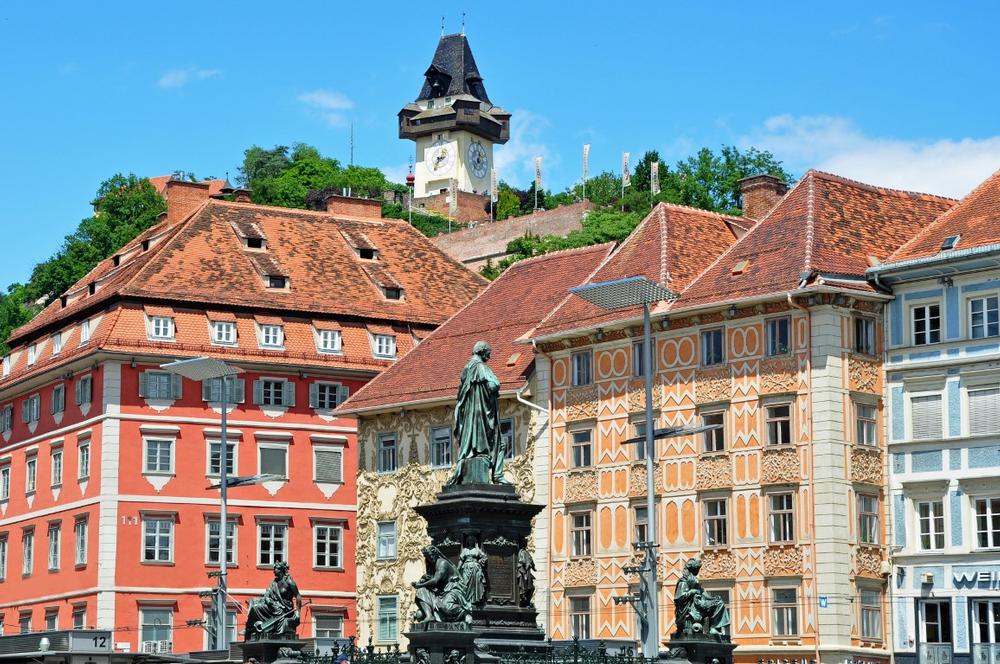
© photo 5000/stock.adobe.com
Location:
Graz, Austria
Highlights:
If you love cities with charm and calm in equal measure, Graz is one we’d gently insist you visit. With its blend of Renaissance courtyards, hilltop views, and quirky museums, it’s a place that quietly leaves a big impression.
Recommended For:
Culture lovers, architecture fans, museum-goers, and anyone looking for a less touristy Austrian city with serious soul.
What I Love: ♥
The panoramic views from Schlossberg, fascinating historic and modern museums, and the city’s laid-back, artsy vibe.
- Ride the funicular to the top of Schlossberg Hill and explore the ruins of a centuries-old fortress.
- Take in sweeping views of Graz’s red rooftops and modern skyline from the Uhrturm clock tower.
- Visit the Styrian Armory, the world’s largest historical weapons collection.
- Admire contemporary exhibits at the Graz Art Museum—an architectural icon in its own right.
- Explore the Natural History Museum or just wander the atmospheric streets of the UNESCO-listed Old Town.
Distance from Vienna:
About 2.5 hours by train or car.
How to Get to Graz:
Take a direct ÖBB Railjet train from Vienna’s main station to Graz Hauptbahnhof. From there, trams or walking will get you into the heart of the city.
Family Day Trips from Vienna:
8. Grinzing
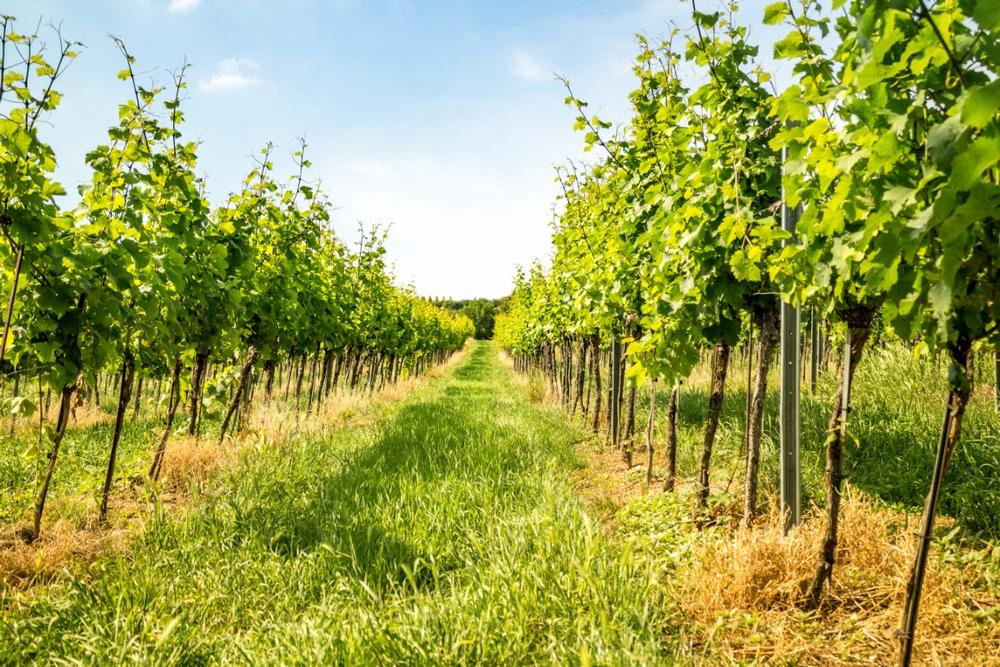
© MysteryShot/stock.adobe.com
Location:
Grinzing, Vienna, Austria
Highlights:
If you’re craving cozy vibes, local wine, and the kind of charm that feels straight out of a storybook, Grinzing is a spot we’d happily toast to. It's technically Vienna—but once you're sipping wine under grapevine canopies, it feels like a world apart.
Recommended For:
Wine lovers, traditional foodies, music fans, vineyard walkers, and anyone wanting an authentic Viennese experience.
What I Love: ♥
Heurigers with homemade wine and food, live folk music under lantern light, and endless rows of hillside vineyards.
- Drink local wine at traditional Heurigers, where you can sample house-made vintages in a rustic, friendly setting.
- Dine on regional favorites like schnitzel, potato salad, and strudel served fresh with your glass of Grüner Veltliner or Zweigelt.
- Listen to live folk music—many Heurigers feature spontaneous, intimate performances.
- Stroll through vineyard trails just outside the village, especially lovely around sunset.
- Relax in a slower, quieter corner of Vienna that still feels like the countryside.
Distance from Central Vienna:
Around 25 minutes by tram or bus.
How to Get to Grinzing:
From central Vienna, take tram 38 to Grinzing. From there, you can walk to a variety of Heurigers and vineyard paths.
Address:
Grinzing, Vienna, Austria
9. Hallstatt
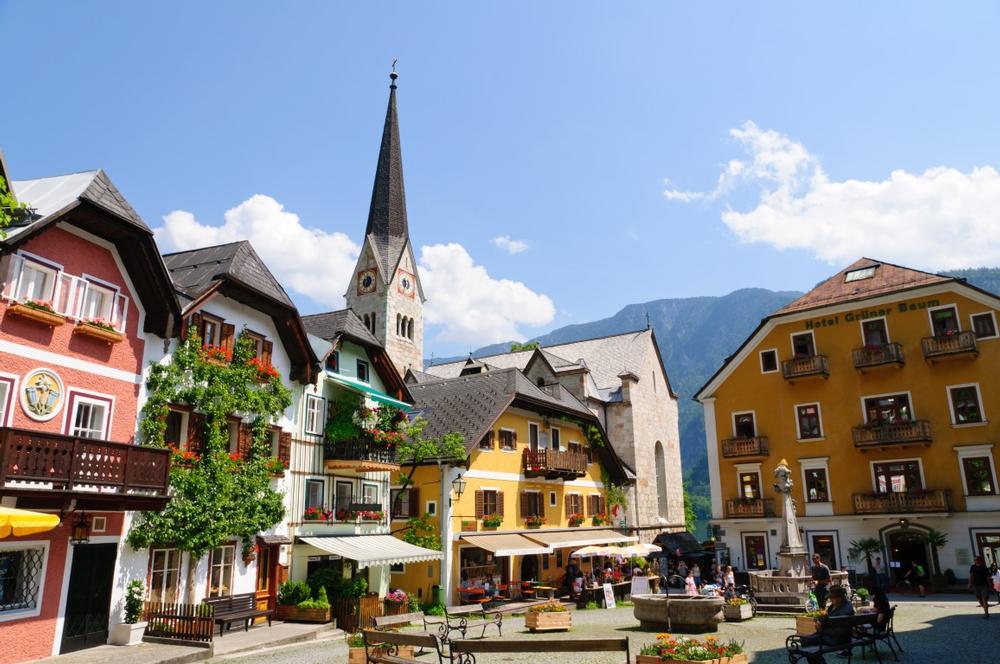
© Scirocco340/stock.adobe.com
Location:
Hallstatt, Austria
Highlights:
Hallstatt is one of those magical places that looks like it leapt out of a postcard—and trust us, it's just as dreamy in person. With alpine views, crystal-clear waters, and storybook streets, it’s a peaceful slice of Austria that’s hard to forget.
Recommended For:
Photographers, romantic couples, mountain lovers, history buffs, and anyone craving a serene escape into nature.
What I Love: ♥
The fairytale setting by Lake Hallstatt, 16th-century houses, ancient salt mines, and sweeping mountain views from the skywalk.
- Wander the village’s cobbled streets, where every turn offers a perfect photo op of timbered houses and lake reflections.
- Ride the funicular up to Salzwelten Hallstatt, a fascinating salt mine with a history stretching back 7,000 years.
- Take in breathtaking views from the Skywalk World Heritage viewing platform, perched 1,150 feet above the lake.
- Visit the Hallstatt Ossuary, a small chapel filled with intricately painted skulls—a unique cultural site.
- Relax by the lakeshore with a coffee or hop on a boat to take in the village’s charm from the water.
Distance from Salzburg:
About 1 hour and 15 minutes by car or around 2.5 hours by train and ferry.
How to Get to Hallstatt:
Drive via B158 and B145, or take a train from Salzburg to Hallstatt Station, then catch a quick ferry ride across the lake to the village.
Address:
Hallstatt, Austria
📔 I get asked this a lot so I decided to include it:
-
Why is Vienna a great base for day trips?
- Located in the east of Austria, Vienna is a wonderful place to base yourself if you're interested
in taking a day trip or two through this part of Europe.
-
What can visitors explore around the Danube River?
- The area around the Danube River offers vineyards and castles galore, making it perfectly suited to a leisurely day
of driving or cycling through the lush landscape, but you can also head to charming towns like the spa town of
Baden Bei Wien or the traditional wine village of Grinzing.
-
What international destinations can be visited from Vienna?
- However, you're not limited to staying in Austria, and many visitors also choose to venture out to cities like
Prague, Ljubljana, and Bratislava.
Best Time for Day Trips from Vienna, Austria
- April to June – Ideal for mild weather, blooming gardens, and exploring historical sites.
- September to October – Perfect for pleasant temperatures, fewer crowds, and scenic countryside tours.
- July & August – Warm summer days great for visiting lakes, castles, and nearby towns.
- November – Enjoy cooler weather and quieter visits to cultural and historical landmarks.
- December to March – Cold but magical for festive Christmas markets, cozy villages, and museum tours.
Map:
Plan Your Trip











